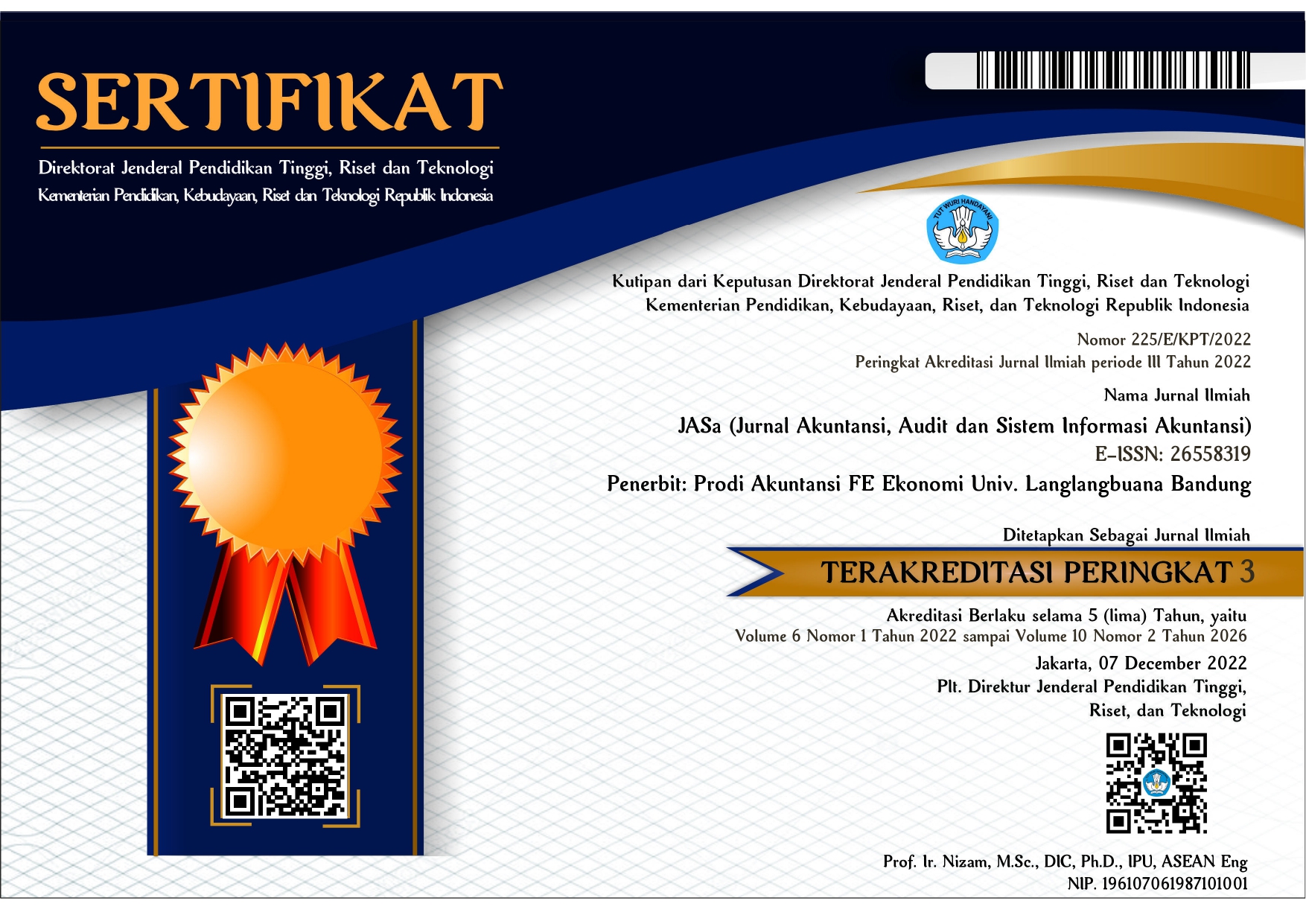Analysis of Factors Affecting the Level Of E-Government Implementation in West Java
DOI:
https://doi.org/10.36555/jasa.v5i1.1491Keywords:
E-government, New Public Management, Good Governance, Sistem Pemerintahan Berbasis Elektronik.Abstract
In order to increase public accountability, transparency, and so that the government is more effective and efficient in running the government. Local governments use a tool called e-government. Not only has the objectives of transparency and accountability, the use of e-government application systems is expected to be able to improve the performance of local governments to be more economical, efficient and effective. This study aims to examine the effect of PAD, capital expenditure, financing revenue, PDRB, education level, and population factors on the e-government index value. Data analysis used linear regression analysis with quantitative research methods. The results of the study based on linear regression indicate that the PAD, capital expenditure, financing revenue, PDRB, and population factors have a positive effect on the e-government index value in regency / municipal governments in West Java.
References
Al-Naimat, A. M., Abdullah, M. S., & Ahmad, M. K. (2013). the Critical Success Factors for E-Government Implementation in Jordan. Computing & Informatics, 4th International Conference, 2013, August, 391–398.
Badan Pusat Statistik Provinsi Jawa Barat. (2020). Statistik Keuangan dan Non Keuangan Jawa Barat 2019.
Elkadi, H. (2013). Success and failure factors for e-government projects: A case from Egypt. Egyptian Informatics Journal, 14(2), 165–173. https://doi.org/10.1016/j.eij.2013.06.002
Gallego-Ãlvarez, I., RodrÃguez-DomÃnguez, L., & GarcÃa-Sánchez, I. M. (2010). Are determining factors of municipal
E-government common to a worldwide municipal view? An intra-country comparison. Government Information Quarterly, 27(4), 423–430. https://doi.org/10.1016/j.giq.2009.12.011
Indonesia, R. (2003). Instruksi Presiden No. 3 Tahun 2003 tentang Kebijakan dan Strategi Nasional Pengembangan e-Government. Sekretariat Negara.
Mardiasmo. (2018). Akuntansi Sektor Publik. Yogyakarta: Andi.
Mayasari, N. Z. (2016). Factors Influencing Quality Management Information System: Indonesian Government. 01(01), 40–43.
Napitupulu, D. (2015). Kajian Faktor Sukses Implementasi E-Government. Jurnal Sistem Informasi, 5(3), 229–236. http://is.its.ac.id/pubs/oajis/index.php/file/download_file/1445
Rose, J., Persson, J. S., Heeager, L. T., & Irani, Z. (2015). Managing e-Government: Value positions and relationships. Information Systems Journal, 25(5), 531–571. https://doi.org/10.1111/isj.12052
Samuel, M., Doctor, G., Christian, P., & Baradi, M. (2020). Drivers and barriers to e-government adoption in Indian cities. Journal of Urban Management, 9(4), 408–417. https://doi.org/10.1016/j.jum.2020.05.002
Sekaran, U., & Bougie, R. (2016). Research Method for Business Textbook: A Skill Building Approach. John Wiley & Sons Ltd.
Serrano-Cinca, C., Rueda-Tomás, M., & Portillo-Tarragona, P. (2016). Factors influencing e-disclosure in local public administrations. Environment and Planning C: Government and Policy, 27(2), 355–378. https://doi.org/10.1068/c07116r
Sugiyono. (2016). Metode Penelitian dan Pengembangan (Research and Development/R&D). Bandung: Alfabeta.
Wulansari, A., & Inayati, I. (2019). Faktor-faktor kematangan implementasi e-government yang berorientasi
kepada masyarakat. Register: Jurnal Ilmiah Teknologi Sistem Informasi, 5(1), 24. https://doi.org/10.26594/register.v5i1.1288







